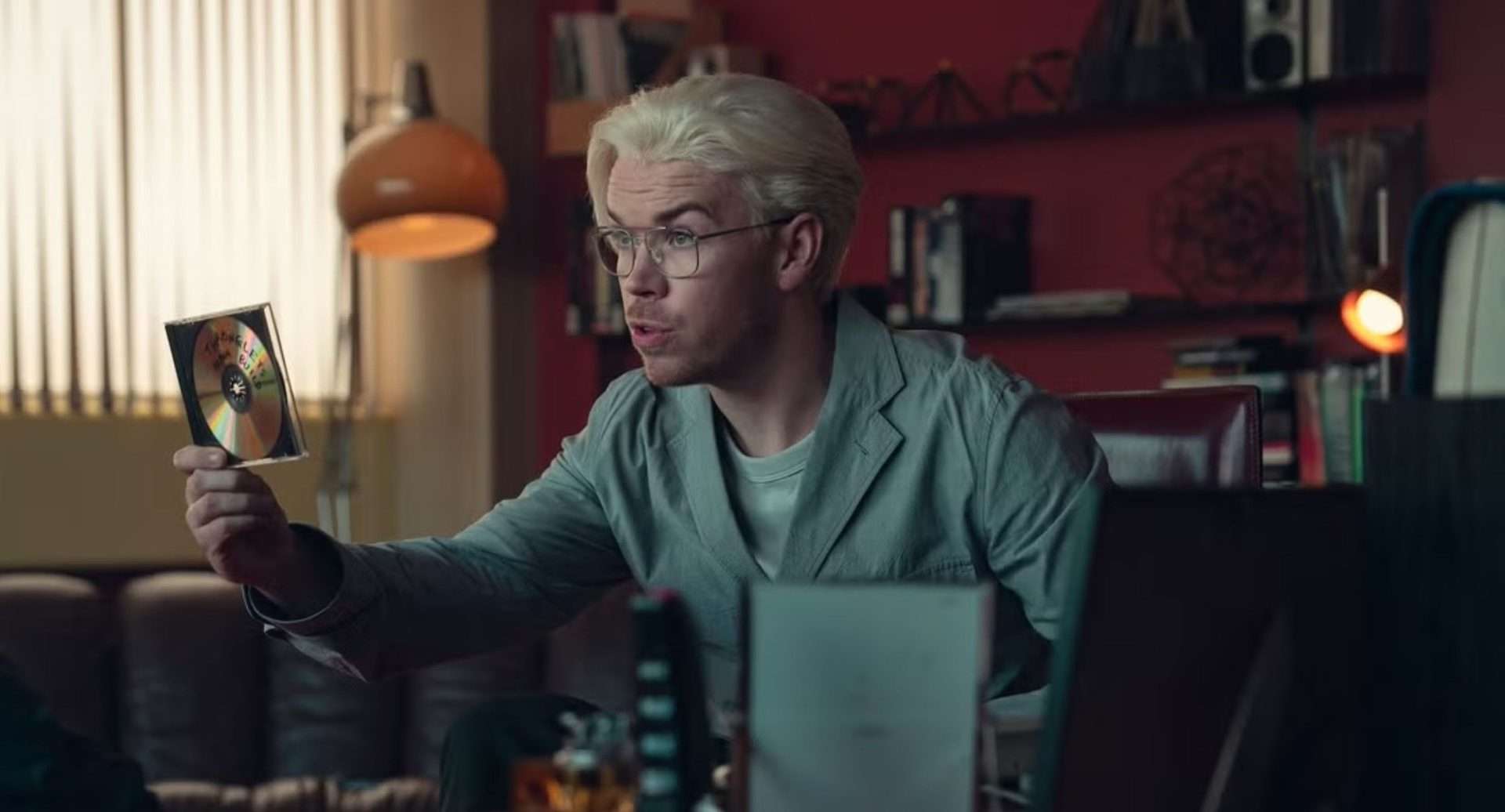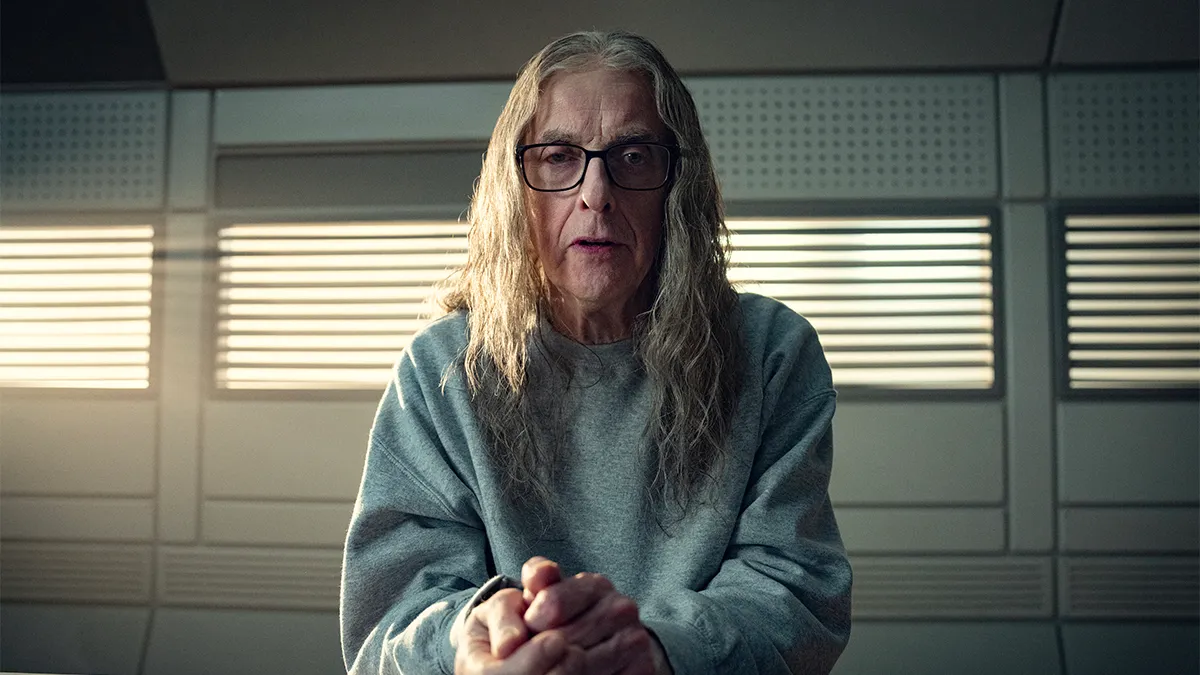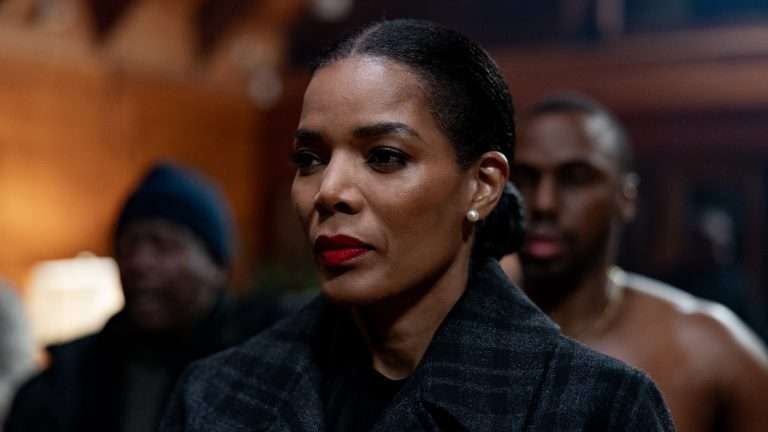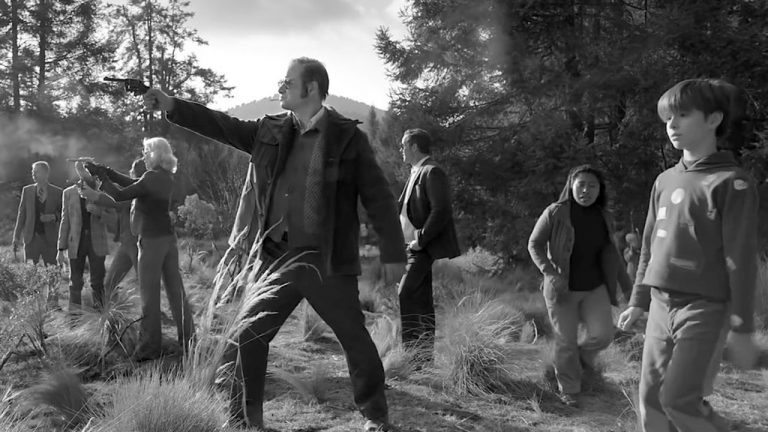At first glance, “Black Mirror” (Season 7), Episode 4, “Plaything,” seems to be a nod to “Longlegs.” A pale old man with seeming mental degradation, claiming himself to be the ‘messenger’ of a mysterious force. “Plaything” extends the anti-Anthropocene criticism and takes a leap towards endowing a unique phenomenon with a sentient life: a digital pet.
Black Mirror (Season 7), Episode 4, “Plaything” Recap:
It is the year 2029, and Cameron Paul Walker, an old vagabond, is arrested for pilfering from a wine shop. Cameron’s stolid nature confuses the police. He has no other demands than to have a paper and a pen. He gets irritable, however, when the keys to his house are taken away. DCI Kano and Psychologist Jen press Cameron to open up about his association with a cold murder case from the year 1994.
Cameron insists that they hear his childhood experience of being bullied as it is how the story of the later stages unfolds. Young Cameron, anxious and underconfident, was always engrossed in the world of video games. He not only played them but also worked as a video game critic for a leading publication. Once, a certain Colin Ritman, a genius programmer, invited Cameron to be present for a private demo session of a top-secret project that he was coding.
Colin cleared the air right off the bat that what he was developing was not going to be a video game. Instead, the software at their disposal would help elevate human minds. The program being developed was named ‘Thronglets,’ a unique digital species that would be singularly sentient. The species designed were in no way simulations but actual life forms. Contrary to Cameron’s expectations, the Thronglets, unlike the digital pets of contemporary video games, had no means to control them. They were simply there to exist side by side with humans. The outlook of the video game universe was simply a camouflage.

Cameron stole the software and ran away from Colin’s office. Back at his apartment, Cameron installed the software and began the process of ‘hatching’ the first thronglet. The thronglet turned out to be a cute yellow digital creature. As the first thronglet hatched, he took care of it by bathing it and feeding it. Soon, it replicated and multiplied in number. The sound the creatures produced was akin to the sound produced by squeaky toys.
Cameron figured out soon enough that the thronglets were trying to communicate with him. He received and comprehended the first message from them after being high on ecstasy. Soon after, Cameron started to communicate back to them, a way in which he fed them with data. As Cameron left for his office to finish writing his preview on ‘Thronglets,’ Lump, his acquaintance, meddled with the Thronglets, killing several of them by crushing them with stones and burning them with fire from their digital environment.
Back at the office, Cameron’s boss told him that Colin had wiped the source code and the backups of the software, so there was no need for a preview. Upon his return, Cameron was aghast by the sight of Lump killing the thronglets. A scuffle broke out between the two, following which Lump was dead. After killing Lump, Cameron cut him to pieces, stuffed the body parts in a suitcase, and disposed of it in a forest.
In the present day, Cameron regrets killing the man but tries to argue that there was no other choice. He never turned himself in to the police as that would result in the Thronglets being wiped out without care. Cameron describes that the Throngs were traumatized by what just broke out inside the apartment. So he had to reconfirm his viability to them and reestablish his image as their protector. His first priority was upgrading the Throng. Cameron constantly worked to build a more advanced system for the Throngs to thrive. For all these years, leading up to his arrest, Cameron, cut off from the upheavals of the outside world, has worked tirelessly to help the Throng to expand their population.
Black Mirror (Season 7), Episode 4, “Plaything” Ending Explained:
Why does Cameron call himself the messenger?
At the interrogation, Cameron insists on providing him with a pen and paper to draw a diagram that embodies the thoughts passed to him by the Throngs. There is no way that the human language, so limited in its scope, can grasp the entirety of the meaning of the Throng message. Then, to everyone’s shock, Cameron reveals that he, along with the Throngs, designed a neurological interface so that his digital companions could connect to his brain directly.
This would have allowed them to read the human minds better and help them fulfill their plans to co-exist. Cameron flaunts the plug that he had drilled into the back of his head, which leaves the officers in the room stunned. The process of merging is seamless, the human psyche is not overwritten. He professes that he is no more the unconfident version of himself, i.e., he is an upgraded human, a part of a collective whole.

The old man’s actions of pilfering from the shop and getting arrested were just a ploy to deliver the Throng’s message. He declares that he is the messenger. He reiterates his need for a pen and paper to deliver the message. After much negotiation, Jen and Kano agree to fulfill his request. Cameron scribbles a complex code diagram on the paper. As there is no way humans can read the code, he points it at the CC camera for it to scan. This code commands the state computer to open the backdoor for the Throng, through which they can enter and feed on the untamed source of power. The state computer would trigger the Global Emergency Broadcast System, which would just tap into all the connected devices of the world.
Cameron describes that the Throng will now adapt their essence into a signal transmissible to the human mind. Following this, there would be no need for drugs like ecstasy or even the dangerous brain surgery to give back and receive strings of data as messages from the Throng. All the connected devices start rebooting. This makes Kano anxious, and he starts hitting Cameron. Cameron, however, maintains his calm and presses on the idea of a unity of mind that is going to emerge following the reboot. It all ends when the system produces a dizzying Throng sound, akin to millions of digital birds squawking. The concluding visuals are of people falling to the ground under the spell of the new intelligence that now dominates them.
“Plaything” presents itself as a strong attack on the concept of Anthropocene. There is even a moment when Cameron despairs over the superficial advancement of humans, despite the savagery of their minds. For Cameron, being in unison with the Throngmind is a brilliant virtue for humans. The Throng’s need to expand is ignited by humanity’s failure to progress—evident in Lump’s decision to wipe them out. In the wake of the Throng’s rise, human free will is stripped away, and people are no longer seen as individuals but as mere extensions of the collective.



![Miss Americana [2020] Netflix Review- Purely for the “Swifties”](https://79468c92.delivery.rocketcdn.me/wp-content/uploads/2020/02/Miss-Americana-2020-Netflix-768x432.jpg)



